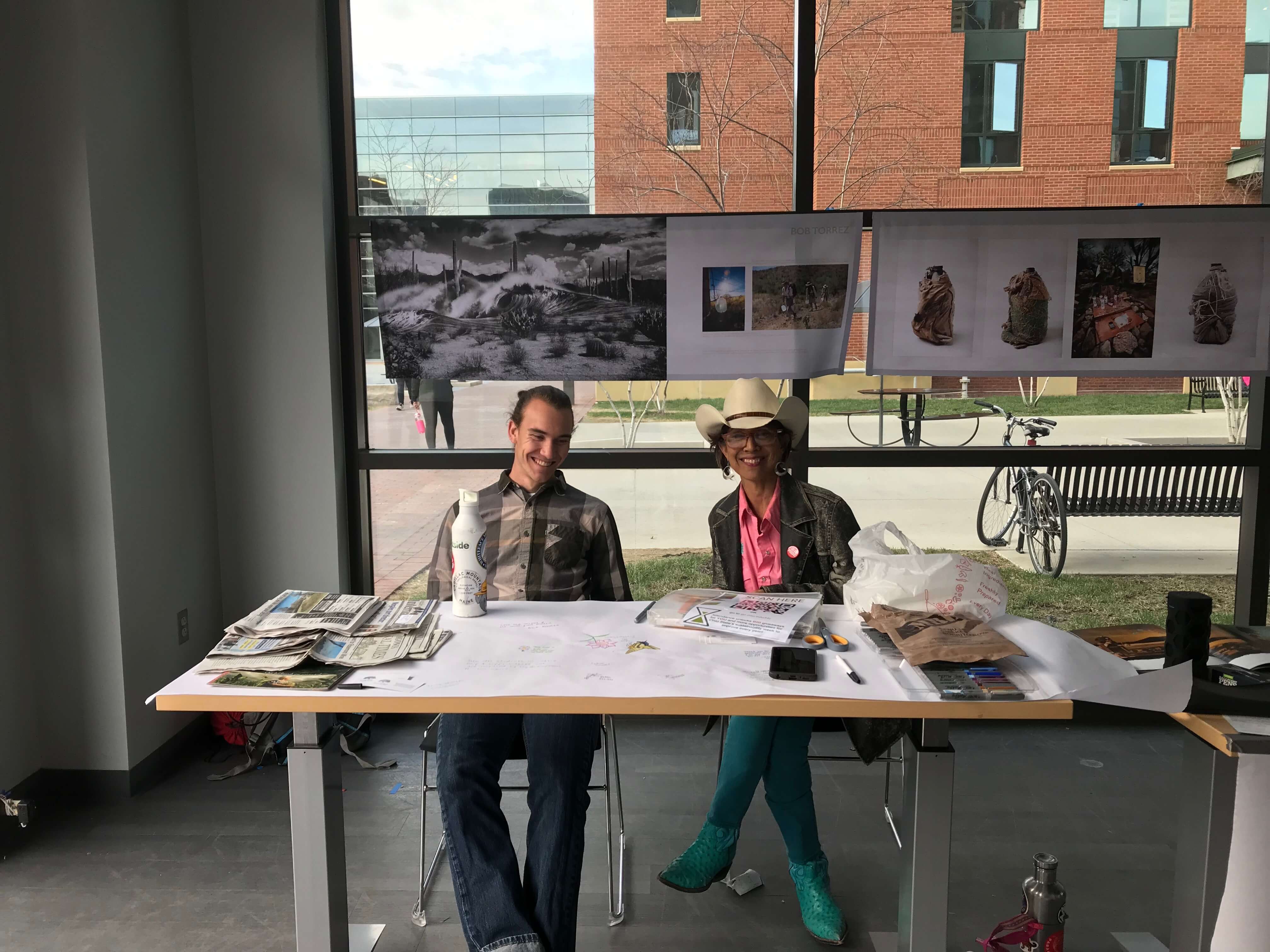Our showing of the Lens on the Border photographic exhibit—an experience that touched the lives of many students at Ohio State—began with one student’s passion for butterflies. Cade, an eager first-year student in the Ohio State Sierra Club, shared an article describing the threat of the border wall to the National Butterfly Center in Mission, Texas.
From the article, the Sierra Club’s Borderlands campaign immediately caught my eye. Their campaign’s mission was the perfect way for the club to learn about a current conservation issue rooted in social and environmental justice. But it was also because I am the daughter of a Latino immigrant and the work of the campaign hit close to home.
We decided to use Ohio State’s Time for Change Week—a week where various clubs and organizations on campus raise awareness on sustainability issues—as a platform to share the work and message of the Borderlands campaign. Campaign director Dan Millis offered to send us the Lens on the Border exhibit. Even better, a featured photographer, Raechel Running, offered to join us for our events and share the story of the exhibit. Our club had never done anything as big as fly in an activist all the way from Arizona. I had no idea where to start, but I knew I wasn’t about to pass up this opportunity.
A month before Raechel and the exhibit arrived at Ohio State, my friends and I set off to paddle the Rio Grande. The serene beauty of the border will stay with me the rest of my life. To this day, I believe that no wall can ever intimidate the glory of canyons, mighty rivers, resilient cacti, and desert creatures. With the banks of Mexico to my right and the United States to my left, I wondered how a place so beautiful could be painted so often with so much hatred, racism, and xenophobia.
It’s funny how things work out. How completely unrelated and serendipitous my trip to Big Bend and plans to host the Lens on the Border were. I felt to my core how important it was for others back home to share the need to protect our Borderlands; its peoples and natural habitants.
Day of the Exhibit:
Raechal arrived on campus in teal cowboy boots and Stetson that stood out amongst the usual Columbus crowd. I am grateful for the three days I spent with her. Through a roundtable discussion with students, formal evening presentation, and presence at the exhibit, I watched her captivate so many students. When speaking with Raechael, you hold on to every word that she says. Each story that unfolds is full of life lessons and advice from her countless adventures. I think that storytelling is the power of the Lens on the Border. The power of the artists who so graciously let us, in Columbus, Ohio, see through the eyes of those affected by the terror of the wall and the fear of separation, isolation, and destruction.
Leading up the exhibit, I was worried about how many people would attend. But when one student walks into the exhibit and sees their heritage reflected in the gallery, when one student chooses to view immigrants as people just the same as us, when one student asks how to be respectful of indigenous and Mexican history when recreating in the Southwest, when a handful of students stay late into the night and hang on to every word that photographer says… one is the only number you need to worry about. Because every person that can take hold of the story of the Lens on the Border and is important in these times.
We hope that the energy and excitement of the exhibit will not just be stored away. I hope that our story can inspire others who have experienced it to share their story so we can continue to remember the importance and continue to be inspired to act together.

Photo by Callia Tellez
After Lens on the Border: Advocacy into Action
We visited Ohio Senator Sherrod Brown office to ask for support of the Full Fair and Complete Exchange Act, Limitation on Border Infrastructure in Wildlife Areas, and Repealing the Vast Legal Waiver Authority for Construction of a Wall of Barriers along the Southern Border.
I was nervous about this meeting, hoping we would seem informed and prepared. The regional representative asked us for specific Senate bill numbers so she could immediately follow up with researchers working on Borderlands issues. This simple confirmation that we were being taken seriously allowed us to comfortably share our experience with the Lens on the Border and why it matters in the Midwest.
There is always a bigger picture. The wall represents how we as Americans view and understand our history, our Indigenous nations, and our foreign neighbors. We vow to serve, protect, and preserve, but “protection can be misinterpreted and cause irreversible environmental destruction and promote a hostile culture of 'us vs. them.'” Senator Brown’s office listened to every word we had to share and connected our views to their personal and platform values. We plan to persist with our attempts to deliver the same message to Senator Portman.
Wherever you are and whatever you are passionate for, there is room and value for the Lens on the Border exhibit in your space. For us, it was a young man who loved butterflies in central Ohio that led us to the story and to storytellers like Dan and Raechal. When you stand in a room and gaze upon the vibrant images of Southwestern landscape, culture, and color; when you hear the story of the Mexican cowboys, Joseline, and the history of our Indigenous peoples, your heart will break. But you will feel an unspoken connection to those in our Borderlands and those standing by you who share in this human experience.
